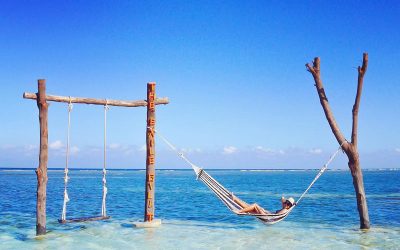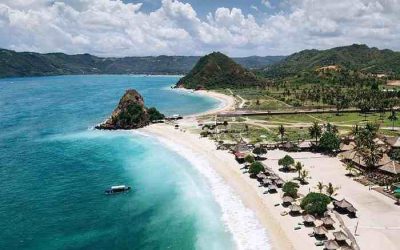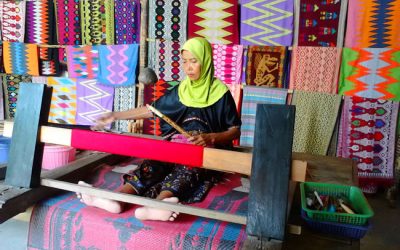Home / Batik Regions – Eastern Indonesia – West Nusa Tenggara / Sade – Bayan Lombok Cultural Villages
Cultural Destination
Embrace the spirit of the place!
Sade – Bayan Lombok Cultural Villages
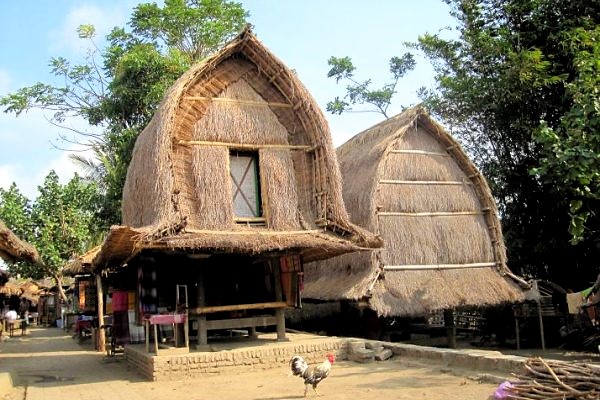
Sade Cultural Village in Lombok (photo: Tata Ruang Pertanahan)
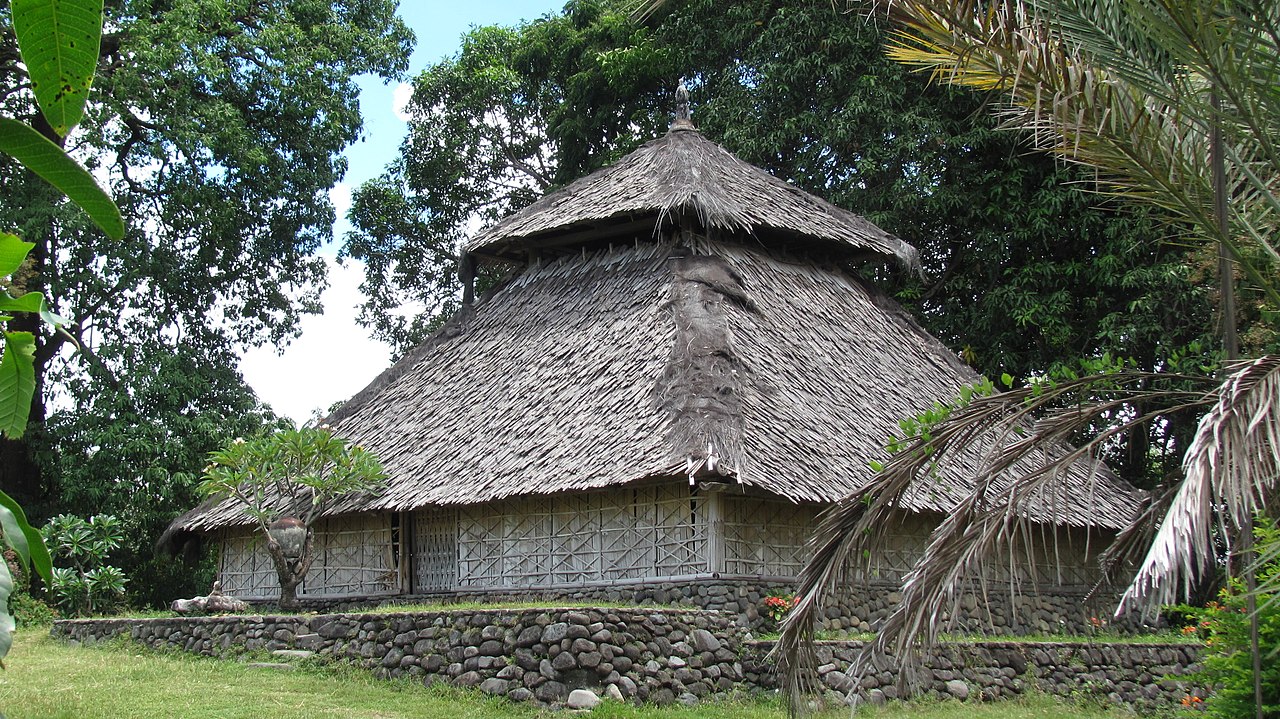
Bayan Traditional Village (photo: Torben Brinker/Wikipedia)
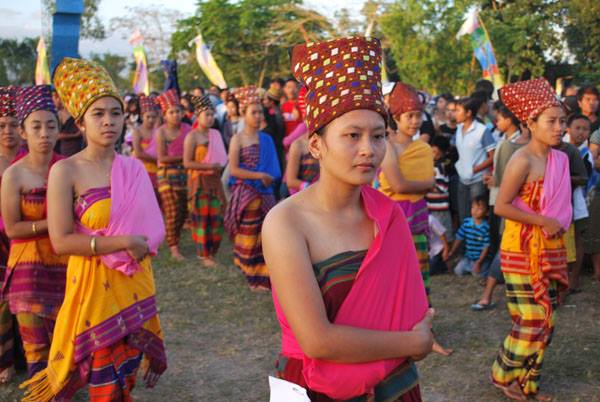
Bayan communities (photo: Laluhusnulyakin)
Sade – Bayan Lombok Cultural Villages
Famous for its cultural destination, Lombok island of West Nusa Tenggara enchants you with its various traditional villages spreading across the island. One of the traditional villages is Sade traditional village in Central Lombok district that has existed since 1079. Each house at this village has a unique traditional bamboo architecture with different styles and names depending on the social status of the family. These vernacular stage houses are known as the manifestation of indigenous Sasak tribe’s local wisdom, as its building structures are able to withstand an enormous earthquake.
Another cultural village is Bayan village, which is located in North Lombok. In Bayan village lies an ancient mosque with pyramidal bamboo architecture that was built in the 16th century. This cultural village is known as the reflection of ancient Muslim community that still maintains their authentic ritual traditions.
Tourist Attractions in West Nusa Tenggara
Gili Trawangan Beach
Do you ever imagine to get exiled on the beach with brilliant white sand and blue crystalline water?
Rinjani – Mandalika UNESCO Global Geopark
The legend says that the beach of Mandalika is the site where the Princess of Mandalika sacrificed
Sukarara Textile Village
Located in Lombok island, this village is known for its flourishing weaving
West Nusa Tenggara Batik Motifs
Daun Sirih
This motif illustrates betel leaves that are used by Lombok communities as traditional
Bale Lumbu
This motif signifies the welfare of the ancient Sasak society. Bale also symbolizes the
Tenun Bima
The motifs are adopted from Bima woven textile. This pattern has received a great
Discover
Indonesian
Batik
Motifs
Taiganja
Taiganja is a precious gold pendant that shows the social status of the Kaili family. It is
Gedhog Kembang Waluh
a combination of Javanese cultural motif of the Majapahit kingdom (XII-XIV century) with
Insang Ikan
Insang refers to the gills of the fish. This is a typical pattern of Malay ethnic who inhabits
Salakanagara
Salakanagara batik motif illustrates the first kingdom in the Betawi land
Merak Ngeram
The hatching peacock motif has a very deep meaning which refers to the sacrifice and
Singayaksa
The Singayaksa motif comes from the name of a place where Sultan Hasanuddin used to
Raja Ampat
Raja Ampat motif represents the marine life at Raja Ampat archipelago in
La Galigo
La Galigo is a literary work of the Buginese Epic that has 300 thousand epic lines. It is considered even
Tanah Liek
The word “Tanah Liek” refers to clay in Minang language. It is also known as
Biji Kopi
The coffee seeds motif illustrates the pride of local coffee specialities in
Mahkota Siger
Siger is the crown of a noblewoman in ancient time. It is a symbol of femininity, strength, and
Pohon Hayat (Tree of Life)
The Batik motifs in Lampung are dominated by the acculturation of Buddhist and
Tifa Totobuang
The batik motifs illustrate Maluku’s traditional music instrument called
Pucuk Rebung Riau
Pucuk Rebung symbolizes heart determination in achieving goals, good luck, and
Sandeq
Sandeq Boat is a symbol of the maritime importance of the West Sulawesi region. The greatness of
Tikar Natuna
The Tikar Natuna motif is adapted from the traditional making of pandanus mats in
Tampuk Manggis Sasirangan
The motif illustrates the philosophy of the mangosteen fruit, which is
Keluak Daun Pakis
The word “Keluak” is a Minang language which means twisted or tangled. The Motif of
Karawo Pinang
Pinang refers to the Palm areca tree. This motif is considered as the original
Jumputan Bintang
The word Jumputan means the tie-dye technique, while the word “Bintang” refers to
Tangerang Herang
Tangerang Herang motif is a symbol of Tangerang city. The Tangerang Herang batik motif consists of
Kaganga Tanah Rejang
If Batik Besurek combines Arabic calligraphy motifs, then the Kaganga batik takes
Tengkawang Ampiek
With its many advantages, the Dayaks use this leaf in ritual ceremonies. This plant is a symbol of
Enggang Dayak
Local people beliefs that hornbills are an incarnation of the Commander of the Birds. It has supernatural
Teguh Bersatu
This batik motif shows the strength of the people of Kupang. It also represents a sense of
Gigi Haruan Lidi
The Gigi Haruan Lidi motif is taken from the name of the cork fish and is a symbol of
Lipaq Sabe
Lipaq Saqbe contains a simple geometric classical motif with various flower decorations. This textile is
Lok Baintan Floating Market
As you can imagine, the most authentic thing is that you can buy things and even
Kaharingan
The Kaharingan or ‘tree of life’ based on the Dayak tribes’ belief system. This tree symbolizes
Bultiya
The word ‘Bultiya’ is an acronym of the three major tribes in North Kalimantan, namely
Tongkonan
Toraja’s traditional house is called Tongkonan. Tongkonan is a place for
Prada Papua
The word “Prada” in the Javanese-Indonesian dialect means a batik textile that
Ake Patra
Ake is related to the divinity and the composition of the universe. It is a symbol of
Gentala Arasy
Built as high as 80 meters, the tower also highlights the historical side of
Pati-Pati Pinehiku
It symbolizes the hierarchy in society and the social status of the Mekongga
Parang Rusak
Another meaning behind this motif is an unconquerable spirit, symbolized by
Rangkiang
The word “Rangkiang” refers to the rice granary in the Minangkabau language. It symbolizes
Manguni Minahasa
Manguni is identified as the symbol of the Minahasa people. Manguni is known as a
Buketan Bali
The Balinese bouquet (Buketan Bali) is a floral arrangement and the name is
Malinau Cultural Festival
You will witness a unique competition that might not be found other than in
Pattimura
Pattimura is the name of an Indonesian hero who fought against colonialism in
Bale Lumbu
This motif signifies the welfare of the ancient Sasak society. Bale also symbolizes the
Hiu Taliyasan
Indonesia is also home to the world’s largest fish, the whale shark (Rhincodon typus). Hiu Taliyasan refers to
Gurdo Solo
Gurdo or garuda bird is the mount of the Indian god Vishnu. As the Sun Bird,
Tenun Bima
The motifs are adopted from Bima woven textile. This pattern has received a great
Gamolan
This motif illustrates Gamolan, a bamboo musical instrument of Lampung that is
Pala Salawaku
This motif illustrates the unique weapons of the Maluku region, namely
Gonggong Siput
Gonggong (Strombus Turturella) is one type of sea snail found around
Jupri Kembang Teh
Kembang Teh illustrates the tendrils of tea plants that grow in the highlands of
Awan Berarak
Awan Berarak is a combination of Dayak motifs and Malay patterns. The word ‘Awan Berarak’ means the
Wirasat
Wirasat or divine inspiration is a gift from God. This inspiration is symbolized by
Ikan tambal
The word “Ikan” refers to fish. The philosophical meaning of Ikan Tambal means is
Daun Sirih
This motif illustrates betel leaves that are used by Lombok communities as traditional
Leuit Sijimat
This motif reflects the daily activities of the Baduy tribe in Banten. The main ornaments of batik motif consist of:
Honai
The Honai is inspired by the traditional house of the Papuan community living in
Daun Simpor
This motif is inspired by the Simpor plant (Dillenia Suffruticosa) which is a typical
Dayak Kamang
Kamang motif is generally found in the Dayak tribe shield because it is believed to
Rumah Mamuju
the Batik motif illustrates the house of Mamuju King with the stairs, located on the left of the wooden stage house
Kain Cual
Cual textile tradition has existed since the 17th century. The word “Cual” refers to
Gajah Way Kambas
The motif illustrates the Lampung’s natural reserve, the Way Kambas. it also symbolizes
Desa Na Tolu
The Desa Na Tolu characteristic pattern symbolizes the Batak philosophy of existence and
Besurek Rembulan
This batik illustrates praise for God who created the wonderful universe
Tabir Tanjung
Tanjung flower is a type of Cherry tree flower, which is commonly found in
Lontara
The Lontara script itself is a typical ancient script of Bugis and Makassar communities. History records that
Pinawetengan
The Pinawetengan Batik pattern was taken from a prehistoric inscription in
Karawo Mahkuta
Mahkuta refers to Gorontalo’s traditional crown. It represents noble characters of
Kerawang Tegak Aceh
The Vertical Upright (Kerawang Tegak) Motif symbolizes a person who has a strong
Srimanganti
The name of the Srimanganti motif is derived from Palace’s hallway that connects to
Cengkeh
The clove flower motif is the main commodity of the Tolitoli Regency. This motif represents
Sekomandi
Its philosophical meaning is the eternal union which refers to a saying “until death do us part”
Sero Tangga
The Sero Tangga illustrates an endearing feeling and sacrifices of a person to fulfil
Durian Pecah
Broken Durian motifs depict the foundation of faith. The second half signifies the mastery of
Gonggong Beruntun
This motif illustrates that a person should maintain a positive attitude and

